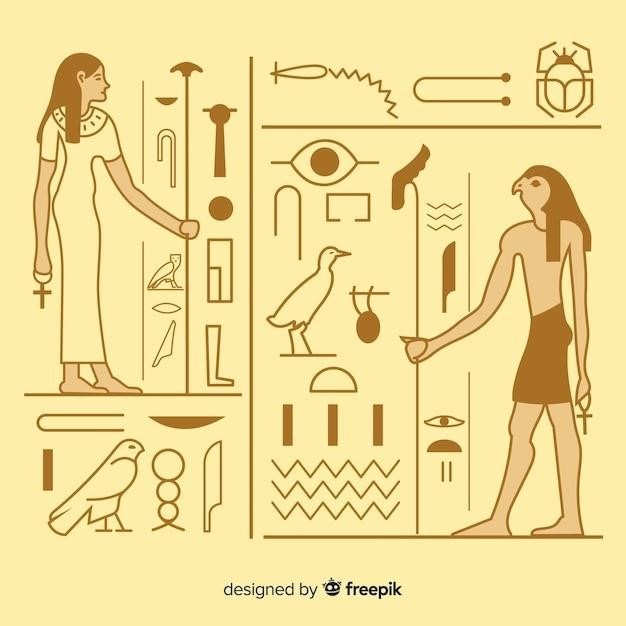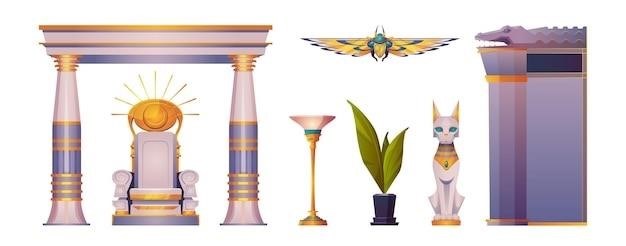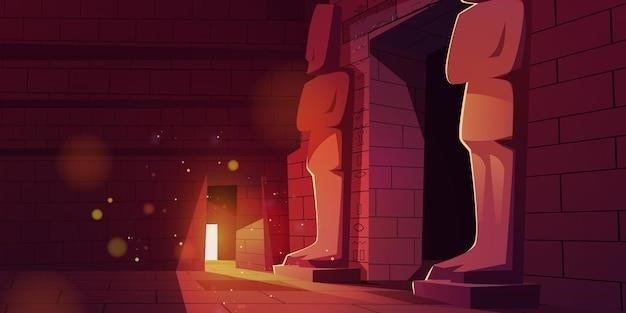Persepolis⁚ A Graphic Memoir
Marjane Satrapi’s Persepolis, a powerful graphic memoir, chronicles her childhood in Iran during and after the Islamic Revolution. It’s a poignant coming-of-age story exploring themes of identity, family, and political upheaval.
Marjane Satrapi, born in 1969 in Rasht, Iran, is an acclaimed graphic novelist, filmmaker, and illustrator. Her work is deeply personal, often drawing from her own experiences and observations. Persepolis, her most celebrated work, is a two-volume graphic memoir detailing her childhood and adolescence in Iran during the tumultuous years of the Islamic Revolution and its aftermath. The graphic novel’s stark black-and-white illustrations, coupled with Satrapi’s poignant and often humorous narrative voice, create a powerful and unforgettable reading experience. Satrapi’s artistic style is distinctive, characterized by its simplicity and directness, mirroring the directness of her storytelling. The success of Persepolis catapulted Satrapi to international recognition, earning numerous awards and adaptations. Her subsequent works, including Embroideries and Chicken with Plums, continue to explore themes of identity, family, and cultural clash with similar emotional depth and artistic flair. Beyond her graphic novels, Satrapi has also directed several animated films, further demonstrating her versatility and commitment to storytelling.
II. The Pre-Revolution⁚ A Childhood in Privilege
Persepolis opens with Marjane’s privileged childhood in pre-revolutionary Iran. Her family, belonging to the educated middle class, enjoyed a relatively comfortable life, contrasting sharply with the political and social unrest brewing beneath the surface. The narrative depicts a vibrant and complex social landscape, where Western influences mingled with traditional Iranian customs. Marjane’s upbringing was marked by a blend of intellectual stimulation and exposure to diverse perspectives. Her parents, both politically aware and involved, instilled in her a strong sense of social justice and critical thinking. This early exposure to political discourse shaped her worldview and laid the groundwork for her later rebellion against oppressive regimes. The family’s interactions with friends, relatives and domestic staff, highlighted the class disparities within Iranian society. Marjane’s early education, which included a mix of secular and religious instruction, provided a foundation for her intellectual growth and questioning spirit. The carefree aspects of her early years are juxtaposed with subtle hints of the rising tensions and political polarization that would soon engulf Iran, creating a compelling contrast in the narrative.
A. Family Life and Social Dynamics

Marjane’s family life forms the emotional core of Persepolis’ pre-revolution section. Her parents, both intellectuals, fostered an environment of open discussion and critical thinking, shaping Marjane’s rebellious spirit. The family’s interactions reveal complex dynamics⁚ the strong bond between Marjane and her parents, the contrasting personalities of her parents, and the subtle tensions reflecting the changing social landscape. Their discussions about politics and social issues, though sometimes tense, fueled Marjane’s own understanding of the world. The family’s interactions with their extended family and friends showcase the diverse social strata of pre-revolutionary Tehran, highlighting both the privileges they enjoyed and the social inequalities that existed. The presence of servants in their household underscores the class differences in Iranian society at the time. The narrative subtly reveals the subtle shift in social dynamics as political unrest grows. The family’s discussions reveal their awareness of the brewing tensions, foreshadowing the upheaval that would soon transform their lives. These intimate portrayals provide a rich backdrop to Marjane’s personal growth and the larger political context.
B. Early Education and Exposure to Western Culture
Marjane’s early education in Tehran provides a fascinating contrast between the secular and religious influences in her life. Attending a French school introduced her to Western literature, philosophy, and culture, significantly shaping her worldview. This exposure to Western ideals fostered a sense of intellectual curiosity and critical thinking, contrasting sharply with the more traditional aspects of Iranian society. The juxtaposition of these two educational systems – the French school and the later religious instruction – highlights the complex cultural landscape of pre-revolutionary Iran. The school’s curriculum, focusing on Western authors and thinkers, instilled in her a love for literature and a questioning spirit. The books she read – from Alice’s Adventures in Wonderland to the works of Sartre and Simone de Beauvoir – broadened her understanding of the world beyond Iran’s borders. This early exposure to Western culture played a pivotal role in shaping her identity and her later rebellion against the limitations imposed by the Islamic Revolution. The contrast between the freedom of thought fostered in her French education and the constraints of the increasingly religious Iranian society becomes a central theme in the narrative. This early exposure to different cultures becomes a crucial factor in her later experiences and struggles.
III. The Islamic Revolution⁚ A Shifting Landscape
The Islamic Revolution dramatically alters Marjane’s life and the lives of those around her. The once-familiar world of relative freedom and openness is replaced by a society increasingly defined by religious dogma and political upheaval. Satrapi vividly depicts the escalating tension and violence, from street protests and demonstrations to the imposition of strict religious laws. The revolution’s impact is multifaceted, affecting not only the political landscape but also the most intimate aspects of daily life. The once vibrant and cosmopolitan city of Tehran transforms into a place where fear and uncertainty permeate every interaction. The shift from a relatively secular society to a theocratic state is portrayed through the changing social dynamics within Marjane’s family and community. The narrative showcases the stark contrast between the pre-revolution freedoms and the post-revolution restrictions. The imposition of the veil, the changing roles of women, and the pervasive surveillance are all integral components of this societal transformation. The revolution’s shadow extends to the family’s personal struggles and the growing awareness of political repression. The once-familiar world is irrevocably altered, leaving Marjane and her family grappling with the new reality.
A. The Impact on Family and Friends
The Islamic Revolution profoundly impacts Marjane’s family and their close circle of friends. The narrative showcases the complexities of their experiences, highlighting both the shared anxieties and the individual struggles within the context of a rapidly changing political landscape. The family’s once-open and liberal views are challenged by the new regime’s increasingly strict interpretations of Islamic law. The close-knit community faces divisions as individuals grapple with the implications of the revolution and navigate the shifting social dynamics. Some friends and family members embrace the new order, while others actively resist, leading to internal conflicts and fractured relationships. Satrapi masterfully portrays the emotional toll on her family, illustrating how their daily lives are disrupted and their personal freedoms curtailed. The text showcases the anxieties and uncertainties faced by her parents as they strive to protect their daughter in an increasingly volatile environment. The changing social norms and the pervasive atmosphere of suspicion and fear affect their interactions with friends, neighbors and acquaintances. The familial bonds, once strong and supportive, are tested by the challenges posed by the new regime, highlighting the resilience and adaptability of the family unit in the face of adversity. The narrative explores the nuanced ways in which individual responses to the revolution shape the family’s collective experience.

B. The Veil and Changing Social Norms
The imposition of the veil becomes a central symbol of the changing social norms in post-revolutionary Iran, as depicted in Persepolis. Marjane’s experiences, and those of other young girls, highlight the complexities and contradictions surrounding this enforced practice. The veil is not simply a piece of clothing; it represents a profound shift in the public perception of women and their place in society. The narrative explores the emotional and psychological impact on young girls who are forced to conform to a new standard of modesty and behavior. The text reveals the subtle ways in which the veil alters social interactions, creating new divisions and hierarchies among women. It also portrays the rebellion and resistance that emerge in response to these enforced changes. Some girls find creative ways to express their individuality despite the restrictions, showcasing their resilience and determination. The narrative carefully distinguishes between compliance and acceptance, showing how many women wear the veil out of necessity or fear, while privately harboring different feelings and beliefs. The veil becomes a potent symbol of the broader changes in social norms, touching upon issues of gender, identity, and freedom of expression. Satrapi masterfully uses the veil as a lens through which to examine the social and political climate of post-revolutionary Iran, highlighting its profound impact on the daily lives of women and girls.
IV. Exile and Adaptation in Austria
Persepolis vividly portrays Marjane’s jarring transition to Austria, a stark contrast to her life in Iran. The graphic novel details the profound cultural shock she experiences, navigating a new language, customs, and social dynamics far removed from her familiar surroundings. The initial excitement of a new life slowly gives way to feelings of isolation and alienation as she struggles to integrate into Austrian society. The narrative explores the complexities of identity formation in a foreign land, the challenges of maintaining her Iranian heritage while adapting to a new culture. Marjane’s experiences highlight the difficulties of belonging, the sense of displacement that accompanies exile, and the emotional toll of leaving behind one’s home and family. The educational system presents its own set of challenges, forcing Marjane to adjust to different teaching methods and a new academic environment. The graphic novel subtly portrays the subtle yet pervasive racism and prejudice she encounters, as she grapples with being an outsider in a predominantly white society. Furthermore, the narrative showcases the resilience and adaptability of the human spirit, as she confronts the difficulties head-on, seeking to find her place in this new world while holding on to her roots. She learns to navigate the complexities of a new culture and forge new friendships, while simultaneously grappling with the emotional weight of her displacement.
A. Cultural Shock and Identity Crisis
Marjane Satrapi’s graphic memoir, Persepolis, powerfully depicts the profound cultural shock she experiences upon arriving in Austria. The stark contrast between Iranian and Austrian cultures creates a significant identity crisis for the young protagonist. She grapples with the unfamiliar customs, social norms, and language, leading to feelings of isolation and alienation. The visual storytelling effectively conveys her internal struggle as she navigates a new environment vastly different from her homeland. The simple yet expressive artwork reflects her emotional turmoil, highlighting the disorientation and confusion of a teenager thrust into a foreign culture. The narrative explores the complexities of maintaining her Iranian identity while attempting to adapt to Austrian society. This struggle is further complicated by the subtle racism and prejudice she encounters, emphasizing the difficulties of belonging and the emotional toll of exile. The stark differences in lifestyle, social interactions, and personal freedoms contribute to her sense of displacement. The graphic novel illustrates her desperate attempts to connect with her peers, yet simultaneously her longing for the familiar comforts of her past life. This internal conflict shapes her personality and fosters a deeper understanding of her own identity, paving the way for a complex and transformative journey of self-discovery. The visual narrative captures the emotional intensity of this crisis, making it a poignant and relatable experience for readers.
B. Navigating a New Educational System
Marjane’s experience navigating the Austrian educational system forms a crucial part of her exile narrative in Persepolis. The stark contrast between the rigid, politically charged Iranian school system and the more liberal Austrian approach presents both challenges and opportunities. Initially, the language barrier poses a significant obstacle, hindering her ability to fully engage with her coursework. The cultural differences in teaching styles and classroom dynamics further complicate her adjustment. The graphic novel vividly portrays her struggles to understand the new curriculum and to communicate effectively with her teachers and classmates. The visual storytelling emphasizes her feelings of inadequacy and frustration as she grapples with a system fundamentally different from what she knows. However, amidst these challenges, she also encounters unexpected opportunities for personal growth. Exposure to diverse perspectives and new subjects broadens her understanding of the world and fosters intellectual curiosity; The narrative subtly highlights the resilience and adaptability of the young protagonist as she persistently strives to overcome the linguistic and cultural hurdles. The contrast between her initial struggles and her eventual academic successes underscores her determination and intellectual prowess. This section of Persepolis effectively illustrates the complexities of adapting to a new educational environment while simultaneously maintaining a sense of self within an unfamiliar cultural context. The visual narrative powerfully captures her journey, illustrating both the difficulties and the eventual triumphs.
V. Return to Iran and Subsequent Exile
Marjane’s return to Iran, depicted in Persepolis, is not the homecoming she anticipates. The idealized memories of her childhood clash sharply with the realities of a society still grappling with political turmoil and social restrictions. The graphic novel masterfully portrays the challenges of reintegration, highlighting the disconnect between her experiences in Austria and the changed landscape of her homeland. The weight of political and social upheaval is palpable, subtly depicted through visual cues and understated dialogue. The familiar streets and faces now hold a different significance, burdened by the years of conflict and repression. Her attempts to reconnect with family and friends are met with complex emotions and unspoken tensions. The graphic novel uses visual symbolism to underscore the subtle shifts in societal norms and the lingering impact of the revolution. The narrative subtly explores the difficulties of balancing personal aspirations with the constraints of a restrictive political environment. The reader witnesses her struggles to reconcile her Westernized worldview with the deeply entrenched cultural values of her homeland. Ultimately, this period culminates in another exile, a poignant reflection of the enduring challenges faced by those caught between two worlds. The visual storytelling poignantly captures the emotional complexities and the profound sense of displacement that permeates this phase of Marjane’s life.
A. The Challenges of Reintegration
Returning to Iran after years of exile presented Marjane with a myriad of unforeseen difficulties, vividly illustrated in Persepolis. The cultural chasm between her Austrian experiences and the realities of post-revolutionary Iran proved immense. Simple acts, like navigating social interactions or understanding unspoken expectations, became significant hurdles. The stark contrast between her Westernized worldview and the deeply entrenched cultural norms of her homeland created an immediate sense of alienation. The visual storytelling in the graphic novel effectively captures this internal struggle. Her attempts to reconnect with old friends and family members were often fraught with tension, reflecting the societal shifts and lingering trauma of the revolution. The subtle shifts in social dynamics, the weight of unspoken political anxieties, and the lingering effects of the war were all subtly depicted. The graphic novel masterfully uses visual metaphors to convey the emotional complexities of her reintegration attempts. The familiar streets of her childhood held a different weight, resonating with the memories of a past that was irrevocably altered. The challenges weren’t merely social; they deeply affected her sense of self and belonging. The graphic novel’s narrative cleverly explores these internal conflicts, showcasing her struggle to reconcile her past self with her present circumstances within a society still profoundly shaped by political upheaval.



